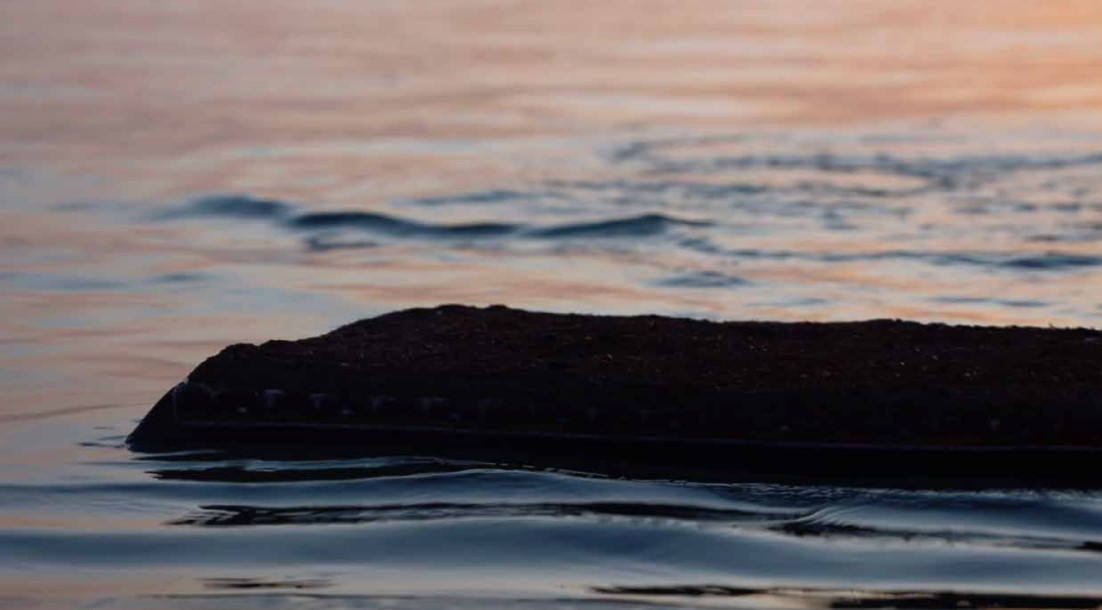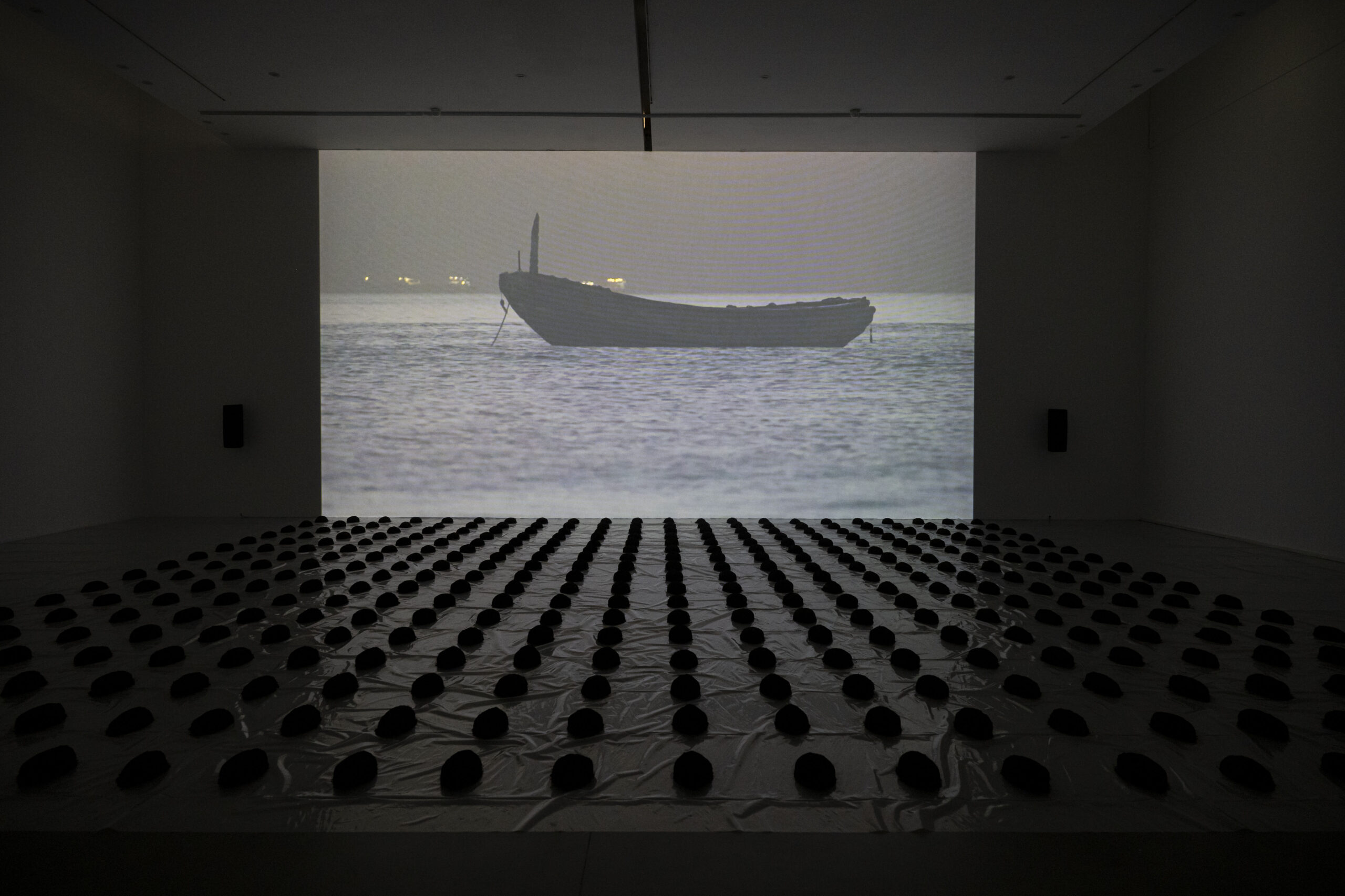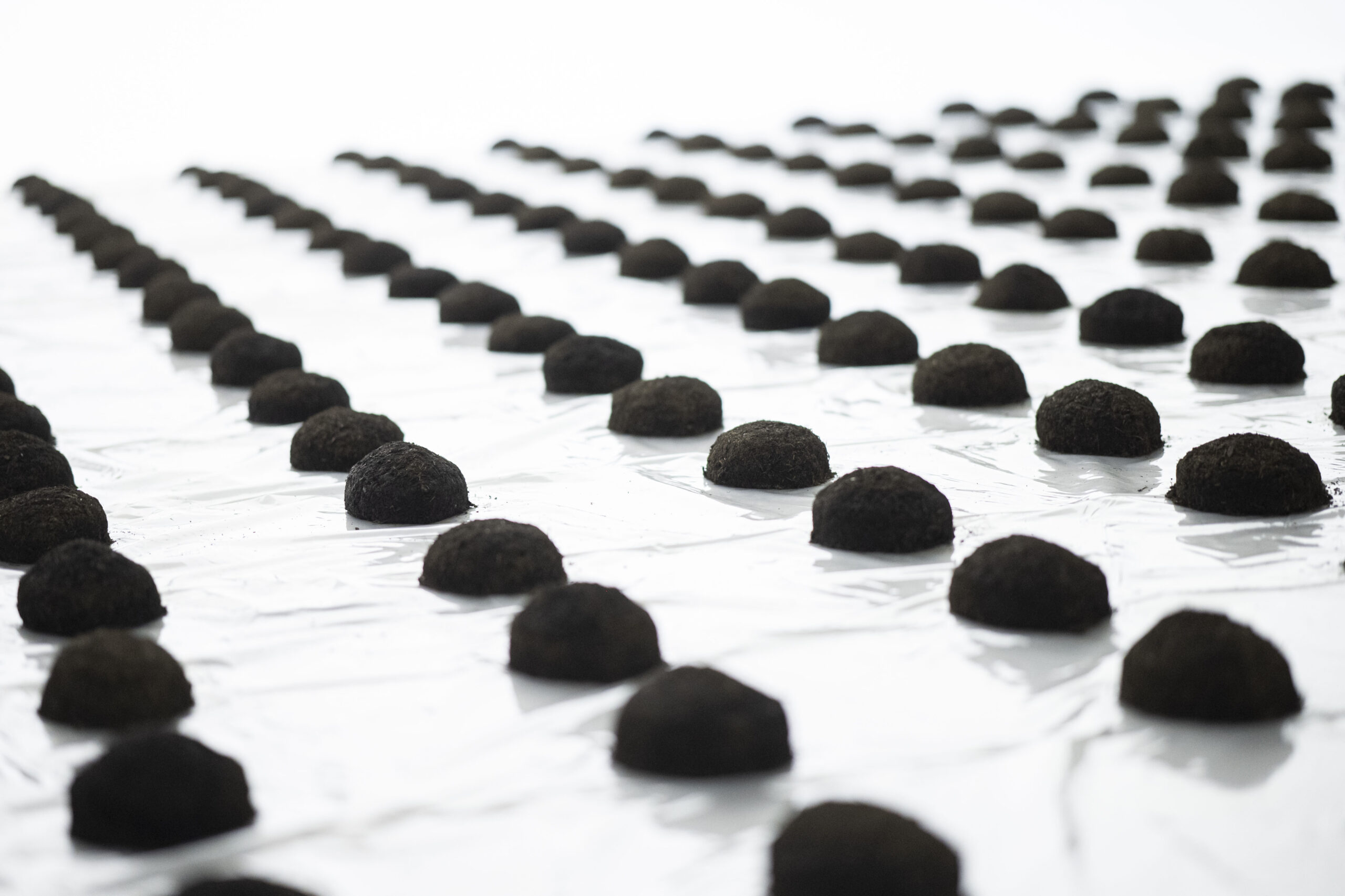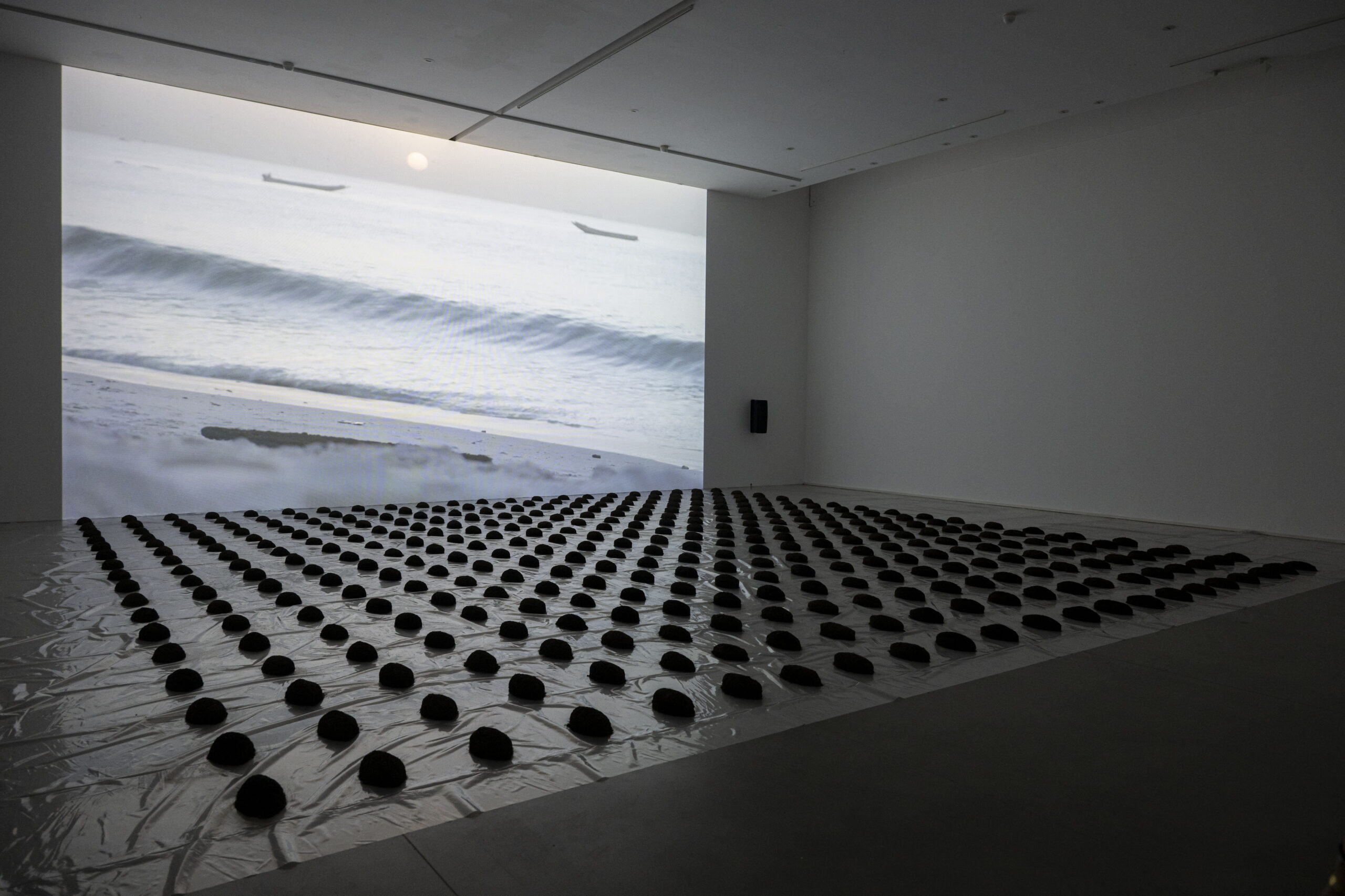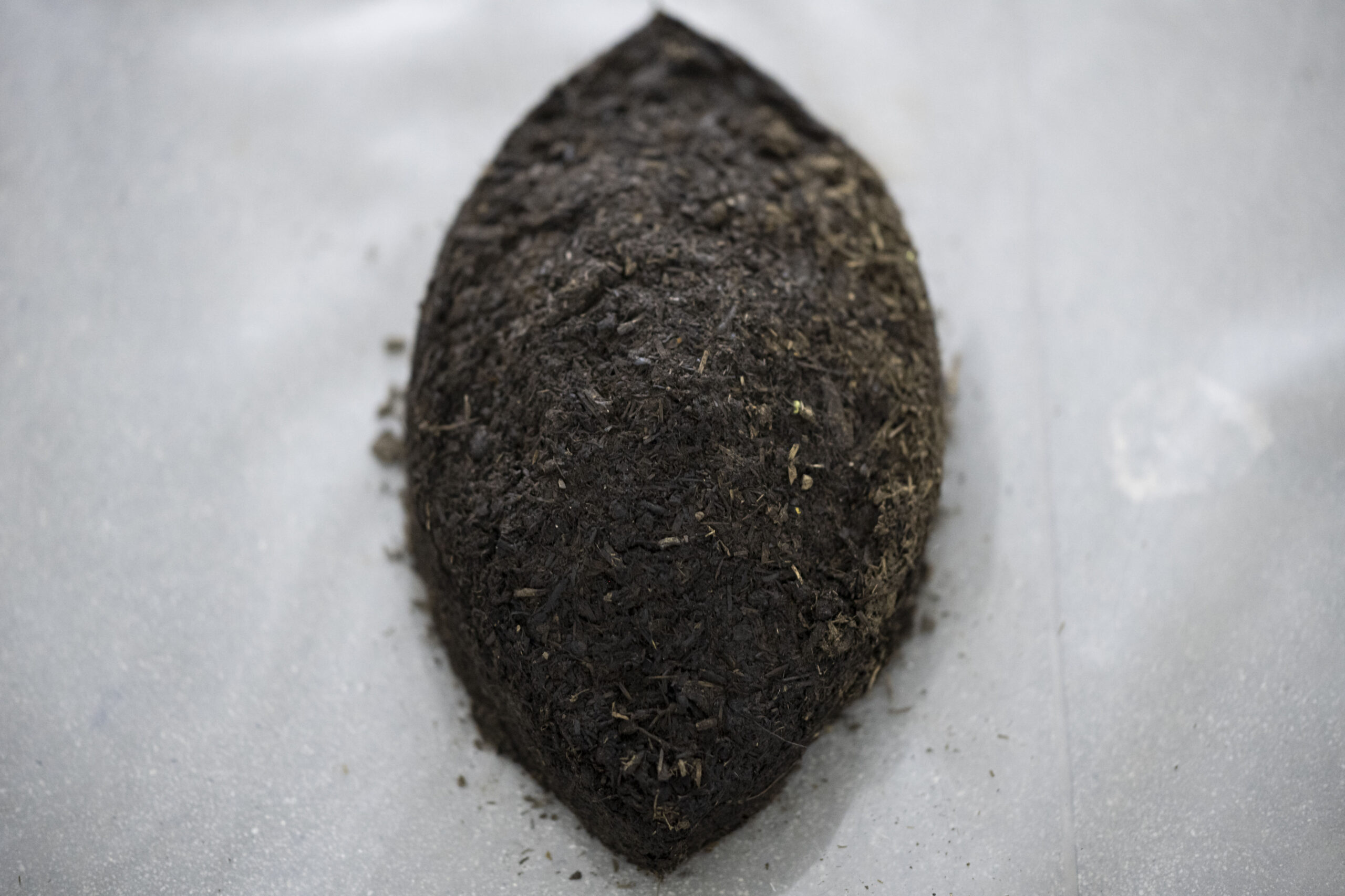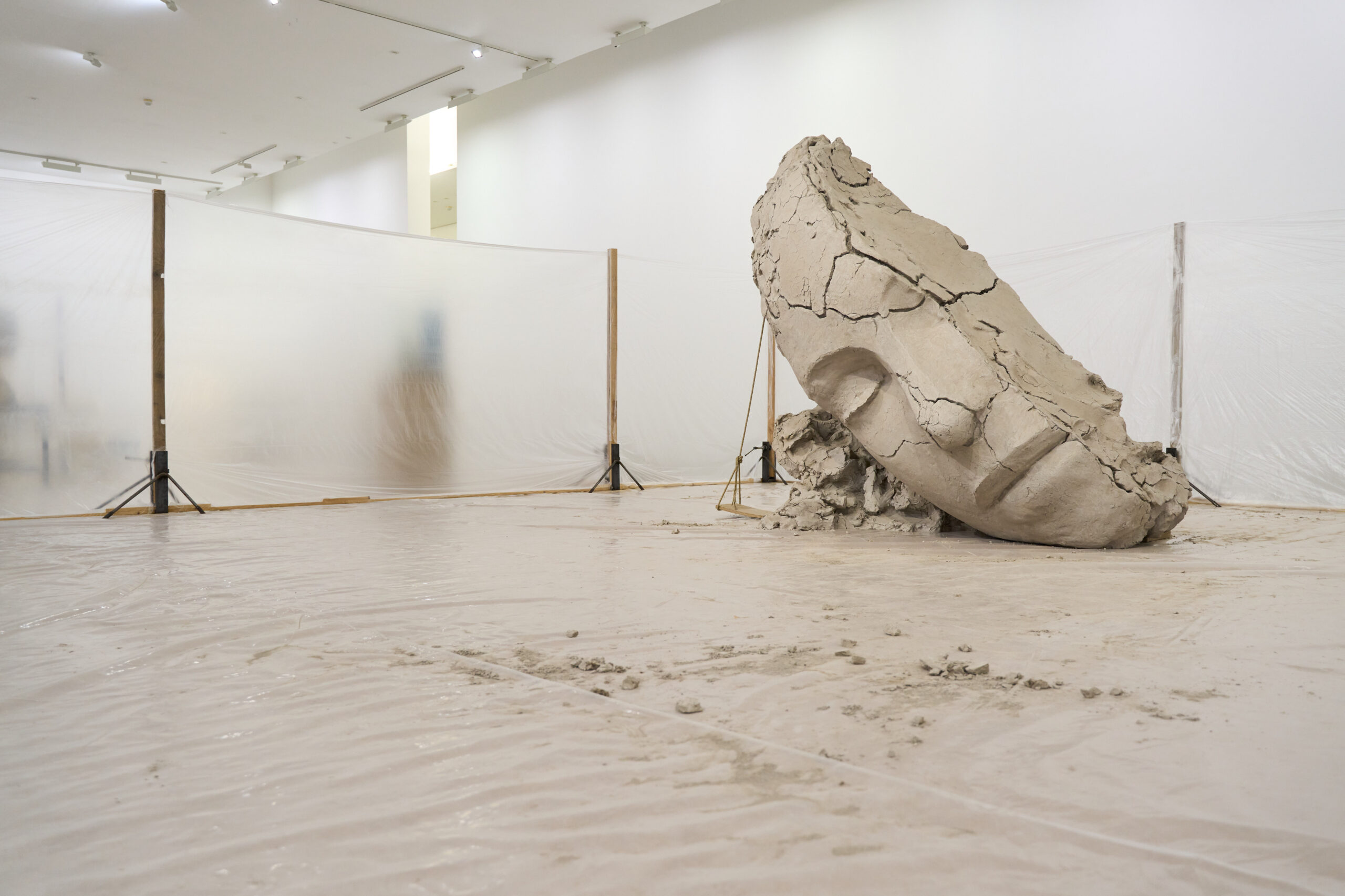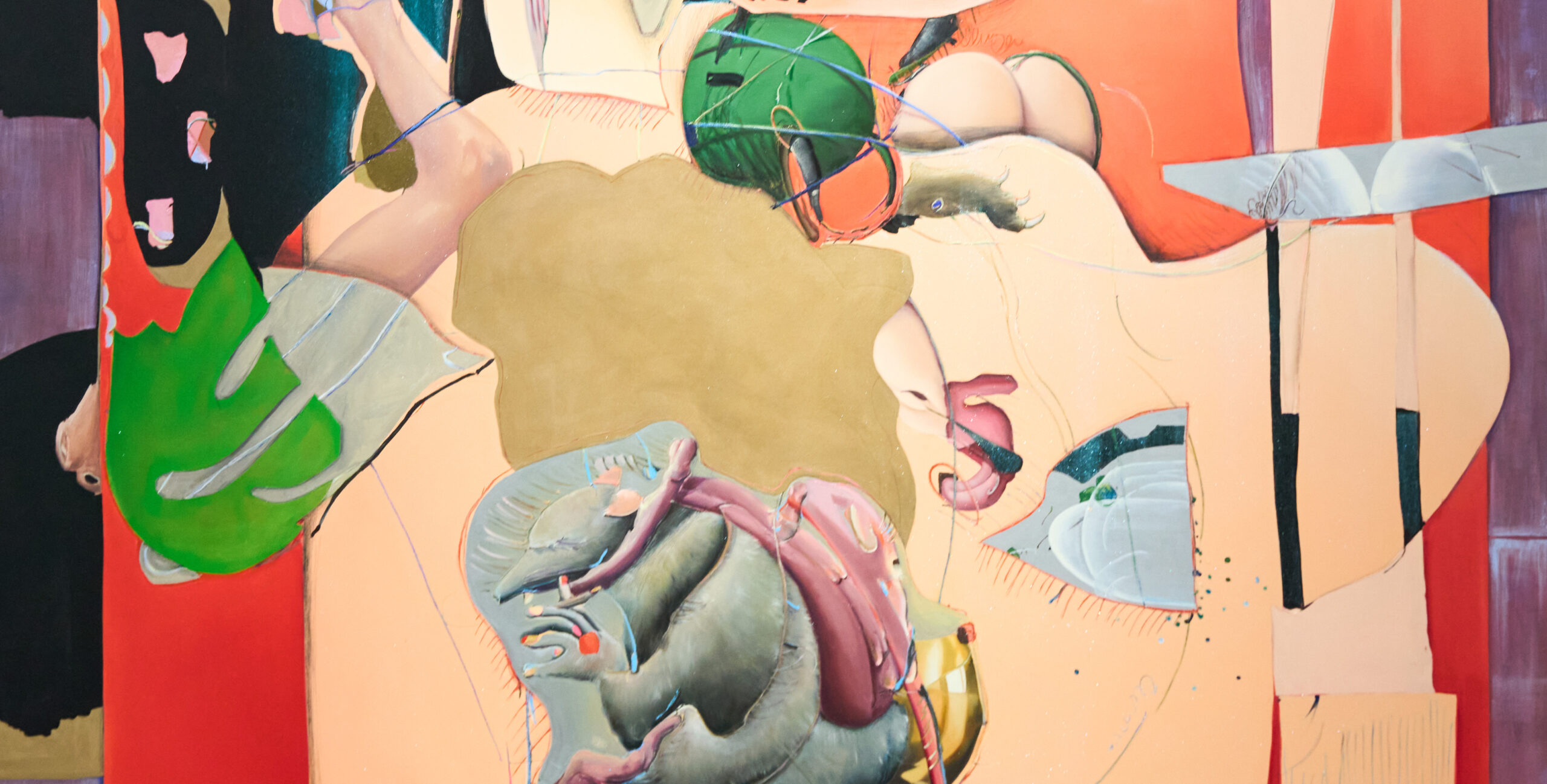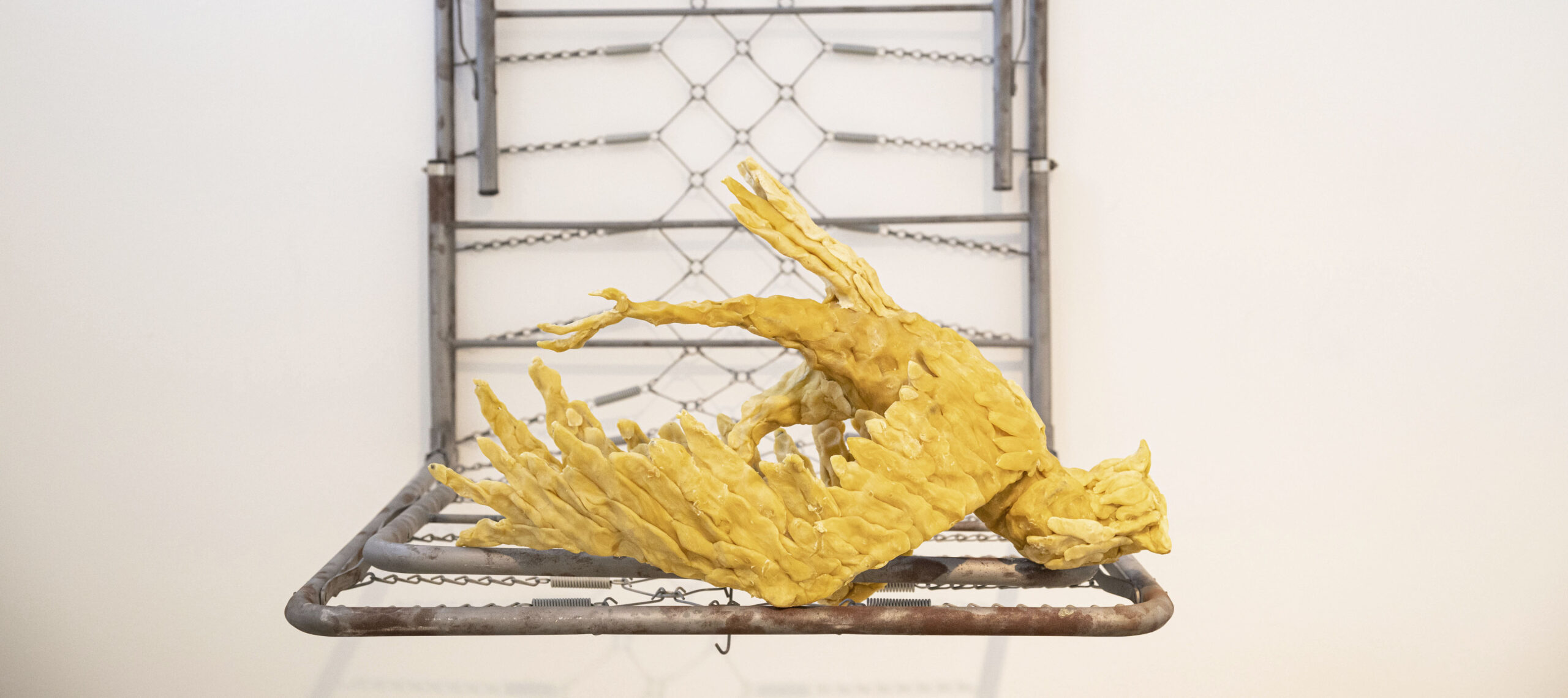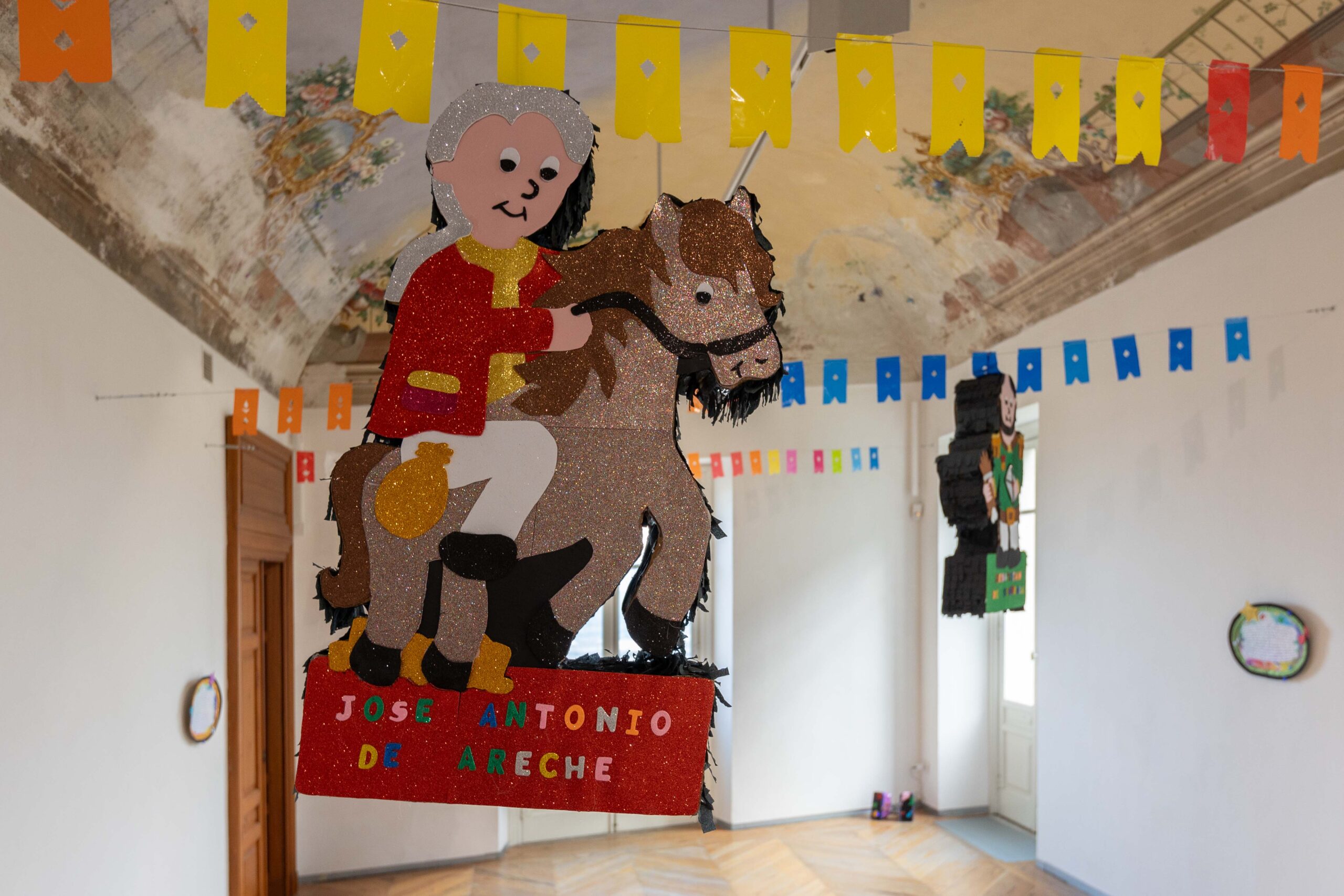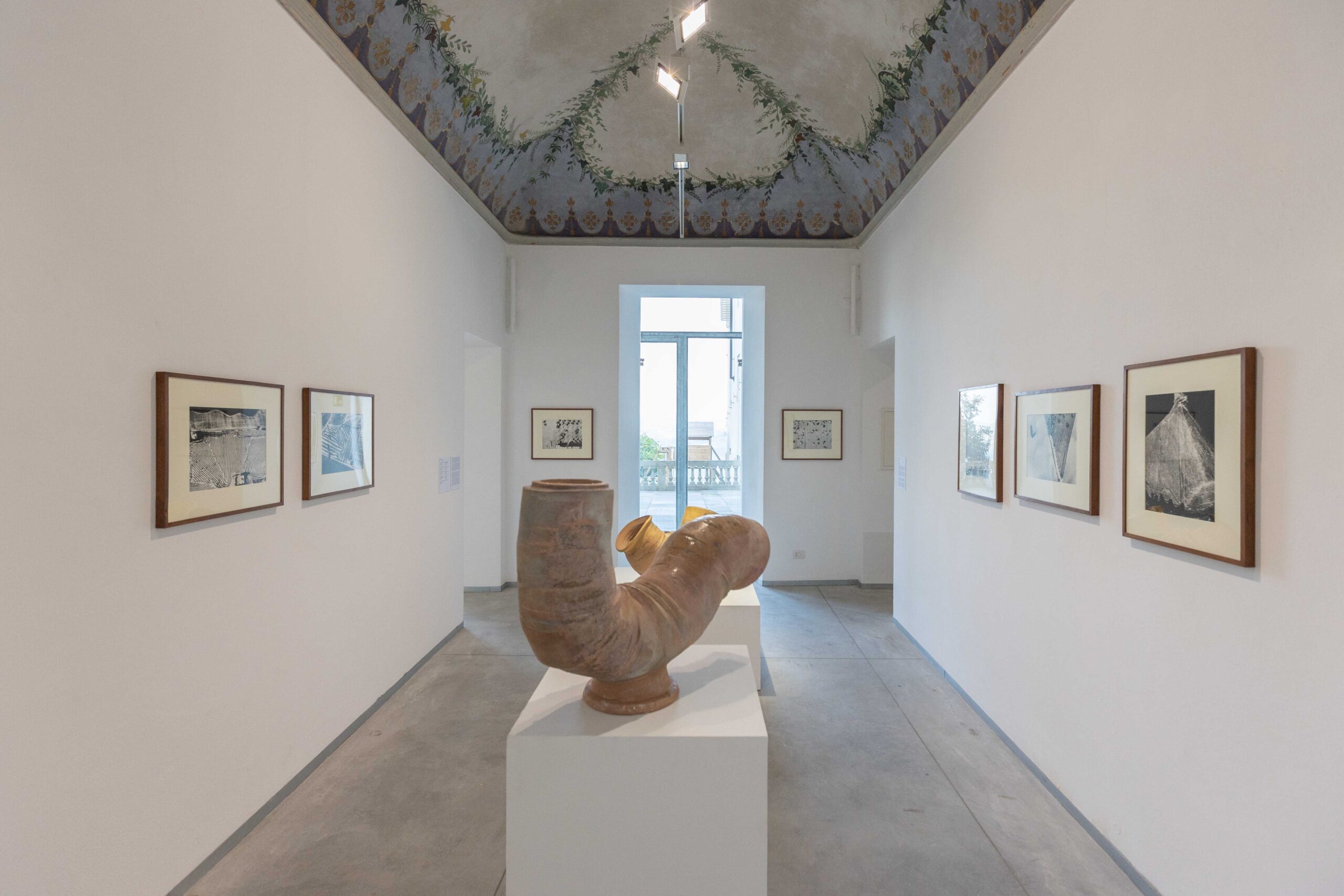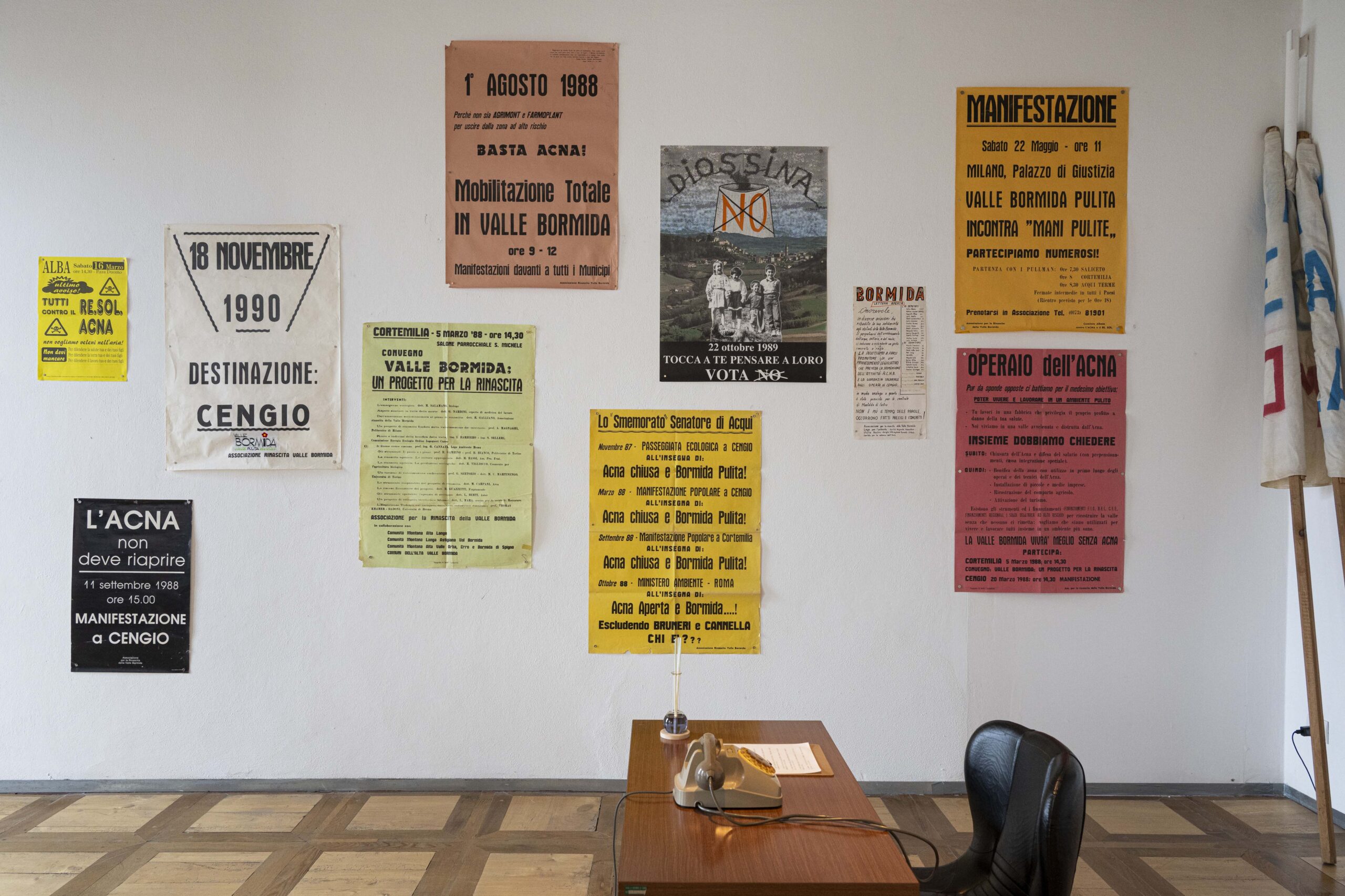Exhibition co-organized and co-produced by the Fondazione Sandretto Re Rebaudengo and Associazione Genesi, for the third edition of Progetto Genesi. Art and Human Rights, a project supported by Associazione Genesi.
The project is conceived as a multisensorial immersion into the complexities of migration and its history between two continents: Africa and Europe. Migration, a politically and economically urgent issue, is also a profoundly philosophical one, in which identity, heritage, and imagination are intertwined.
Since the beginning of her practice, Binta Diaw has been interested in the movement of people over time, whether voluntary or forced, official or unofficial. Of particular interest to the artist is the idea of the diaspora, which characterizes her own background, born in Italy to Senegalese parents. Diaw further develops her conception of diaspora beyond the idea of a physical or symbolic displacement—and the difficulties of uprooting and re-establishing oneself that come alongside—to posit diaspora as a state in which “we can be many at once,” building on Edouard Glissant’s words that “every diaspora is the passage from unity to multiplicity.” Fittingly then, perhaps, diaspora not only serves as an entry point for the artist to delve into the history of migration in Africa, but also as a point of departure for her to follow the “African tendency to journey elsewhere.”
As part of Progetto Genesi at the Fondazione Sandretto Re Rebaudengo, Binta Diaw has created an immersive installation that addresses the theme of migration, centered on the migrant body and its sensitivity to nature and the surrounding culture.
Filmed in Yarakh, Senegal and conceived of as a visual meditation on the ocean, a video is projected onto the back wall of the gallery. The camera focuses on the water and the waves that form offshore. Lampedusa—an island at the crossroads between two continents—appears in the distance. A dark mass, shaped like a rectangle, oscillates against the winds and waters. This form is revealed to be a rug woven out of dirt, underlining the semantic richness of the phrase “this is my land”—referring to the place that we either choose for ourselves or is chosen for us, particularly in relation to Africa and its colonial history. On the ground are several small identical sculptures made out of dirt, placed upon two large sheets of plastic recalling the rug in the video as well as ocean pollution. Altogether, the installation speaks to the way in which people and their stories are reduced to mere numbers and seen as indistinguishable upon their arrival in Europe.
The artist explains, “I filmed this video in the outlying district of Yarakh in Dakar, in the attempt to draw attention to the site of departure, and to the departure itself, of the people who decide to leave from that point. By now, migration has been generalized into a single image: disembarkment and invasion. But we don’t ask ourselves and we don’t stop to think about their starting point, about the suffering that they come from, and above all, how they were able to face their journey. The video is therefore a metaphor of the body awaiting its fate: an invitation from the ocean that welcomes the body into its waters until it is thrown out. The rug—long associated with notions of hospitality and spirituality in some cultures—becomes a metaphor for the migrant body, of the body in movement—not only from one place to another, but also from a physical and mental state to another.”
The exhibition is accompanied by a monograph on the artist, edited by Ilaria Bernardi, published by Silvana Editoriale, and produced by Associazione Genesi. The publication is the first survey of the artist’s work to date.
This exhibition is the third edition of Progetto Genesis. Art and Human Rights, curated by Ilaria Bernardi and supported by the Genesi Association since 2021. Founded with the idea that contemporary art can serve as an emissary, the project connects exhibitions to education with the goal of providing an ongoing dialogue about human rights. Interdisciplinary, itinerant, and inclusive, Progetto Genesi is unique in its radical commitment, as well as breadth and depth of initiatives—not only within the contemporary arts in Italy, but worldwide.
On the occasion of this exhibition highlighting the important work of Binta Diaw, the Fondazione Sandretto Re Rebaudengo will also present two additional projects by the artist, both curated by its Senior Curator Bernardo Follini. The first is a wallpaper featuring one of the works from Diaw’s Paysages Corporels series, on view at Palazzo Re Rebaudengo in Guarene starting June 18; the second is an exhibition at the Palazzo Banca d’Alba, on view from June 14 to July 21, presenting well known works by the artist previously exhibited in major shows.
